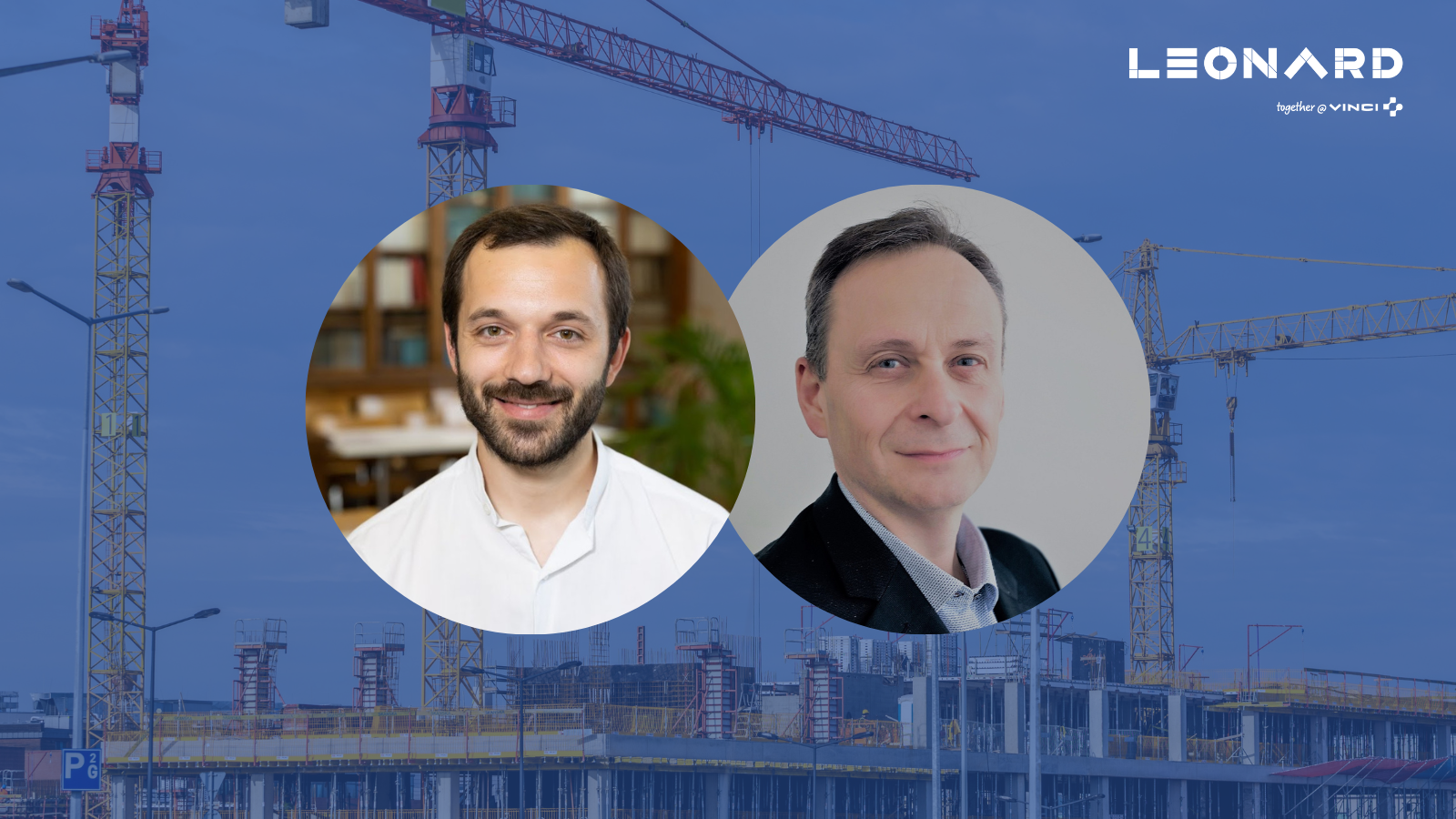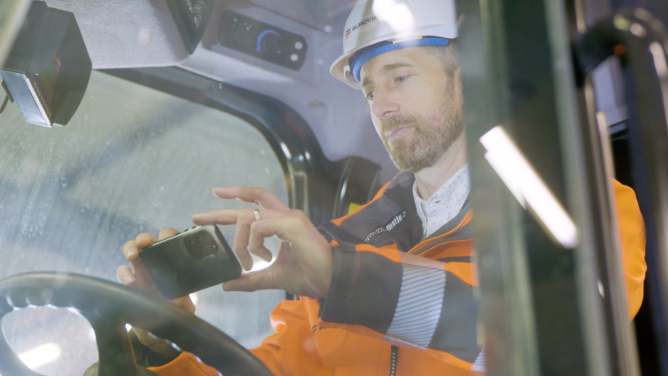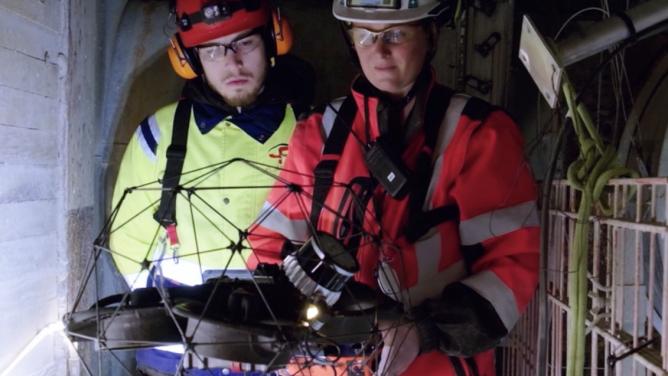
Sixense Digital, a subsidiary of VINCI Construction, designs, develops and deploys solutions that meet the challenges of safety, quality and control of operations for builders and infrastructure managers.
Kraaft is a start-up that develops a collaboration platform dedicated to field teams, which allows them to generate specific reports and analysis from a simple job site conversation. It is a member of Leonard’s Catalyst program.
How does a site supervisor currently report on the operations for which he is responsible?
Frédéric Delrieu: The role of a site supervisor is to ensure that the site is well organized and that the work is progressing well, while guaranteeing quality, meeting deadlines and staying within budgets. He interacts on a daily basis with all the parties involved, in particular during site meetings and specific exchanges with the project owner, the project manager and all the trades.
The follow-up of most of these tasks is generally not very digitalized, even though most of them are carried out on the move and require centralized access to all the project documentation (plans, studies, reports, minutes, etc.). Monitoring and reporting are time-consuming and can be a source of errors.
Marc Negre: The other aspect of reporting, which is often underestimated, is the real-time flow of information that is exchanged. This day-to-day communication is most often done by SMS, WhatsApp and email: “digital” channels, used in the private lives of teams, but quite informal and unstructured. It’s so easy to use! And it works well for real-time follow-up because it’s reactive (“I have a problem with the siding, I’ll send you a picture, what do you think?”, etc.) … But with dozens of messages per day, the really important information gets lost quickly, and when it comes to tracing a past event, or following the resolution of a task, the management loses a lot of energy doing archaeology!
How do your products respond to these challenges?
Frédéric Delrieu: From the start, we chose to develop our “Beyond InSite” solution based on the needs of field teams and use cases tested with VINCI Construction business experts. Our solution is articulated around three complementary business modules and brings together different functions within the same tool:
Firstly, the monitoring of the progress of construction and self-checking phases of works, safety visits and other events (MyForm).
Secondly, the optimization of the management of subcontractors, the follow-up and distribution of reserves to the corresponding trade (MyCheck).
Finally, the management of the document base and the validation of the distribution of documents to stakeholders with a powerful and configurable electronic management system to ensure that construction is based on validated plans (MyDoc).
Marc Negre: Kraaft’s approach has its roots in public works teams (Eurovia, Sogea, Vinci Energies), whose worksites often last several weeks or months and cover large areas (long linear roads or interventions on several departments).
We have therefore built Kraaft around four main bricks:
One conversation per site. This is the heart of the reactor: an ultra-simple interface similar to an SMS where the site manager and the driver exchange messages, geolocalized photos, and transcribed voice messages. The objective is to have a training time of less than 10 minutes for the teams, and already to record the entire life cycle of the site on a single channel.
Then, the generation of reports. As Frédéric mentioned earlier, reporting can be time-consuming. This functional brick makes it possible to generate site reports (end-of-month installment, justification file) and event reports in one click. And this from the data of the site conversation!
To allow the stakeholders (drivers, surveyors, engineers) to find the information instantly without archaeology, Kraaft also allows to explore the sites not only in chronological format, but also on a map (photos & geolocated events), on a spreadsheet, on a Kanban.
Finally, we make sure that the data is properly distributed. We integrate with SharePoint and Drive, for example, to send the workflow to the right place.
What do you think are the keys to getting field teams to adopt your solutions?
Frédéric Delrieu: The challenges for Sixense Digital are to support the digitalization of each site as close as possible to the users, to secure their data and to make their use reliable, including in mobility.
Our support service guides users in order to maximize the positive impact of our solution in their daily life, the main requirement of operational staff being to have an easy implementation and a quick adoption for them and their teams.
This allows us to clarify the use cases, update our roadmap and regularly deliver the necessary improvements in production every month.
Marc Negre: I am completely in phase with Frédéric! The key is to have a real DNA in the field, both in training, in understanding needs, and in prioritizing the roadmap. From our side, I would say that there are three pillars for a good adoption:
First, the simplicity of the tool! Make strong choices to ensure a really simple experience for the core users (in our case the site managers). This is always a difficult line to walk, as we would like to add so many features, but beware of “feature creep” (infinite addition of features)!
Next, training and people! Arrive in the agency and in the field with a big smile, energy, croissants, for focused and dynamic training! It creates a bond, it engages users, and it allows to simply identify possible blockages.
Finally, adaptability to existing processes. This is the “no-code” aspect of Kraaft, which can also be found in other forms at Sixense, and which allows the product to be adapted very easily to internal processes (for example, on a data structure or a report format).
Is it possible to measure the productivity gain linked to the digitization of site monitoring?
Frédéric Delrieu: Users confirm that using Beyond InSite allows to divide by two the duration of site meetings, which is a significant gain and easy to measure. However, the productivity issues go far beyond this type of action.
Although each site is specific, certain productivity issues are identical. The massive processing of data from numerous worksites allows us to extract key indicators and determine the type of dashboard needed to measure them.
Marc Negre: For our part, the “measurable” gains are mainly expressed in terms of time saved in retrieving information (for certain claims, fortunately not so frequent, a works manager can quickly spend 1-2-3 weeks!), and in work valued at its true value (a few meters of rock to be broken up, changes in the layout of the network, etc.).
And I am completely in phase with Frédéric, the stakes go beyond “accounting” factors. We get a lot of feedback on site managers who are more committed and empowered, better valued for the good work they do. Or all those small daily time savings (having the right execution plan at hand, not wasting 10 minutes looking for the precise location of the site, saving a non-essential round trip by car, etc.).
What are your objectives for the coming year?
Frédéric Delrieu: One of our objectives is to facilitate the adoption and integration of BIM processes throughout the entire value chain of our businesses. In particular, this means better incorporating the uses of EDM and BIM into site processes. To achieve this, we also need to support the transition from construction to operation by integrating the Digital Construction File (DCF) into the operation and maintenance processes. Finally, we need to ensure the rapid availability of data throughout the warranty period of the work.
Marc Negre: Every month there is an update of Kraaft, and ideas from our users and teams are coming in! Among these, we want to make the experience of the photo and annotation even more fluid; and to encourage exchanges with the project manager and the owner through specific modules where access to information is intelligently managed. We also want to develop new ways to explore and search for photos and events. Finally, we want to develop new integrations, in particular with the IS of certain entities of the VINCI group, with which we have increasingly mature projects.
Contacts :
Frédéric Delrieu, directeur Général de Sixense Digital : frederic.delrieu@sixense-group.com
Marc Negre, co-fondateur de Kraaft : marc@kraaft.co


